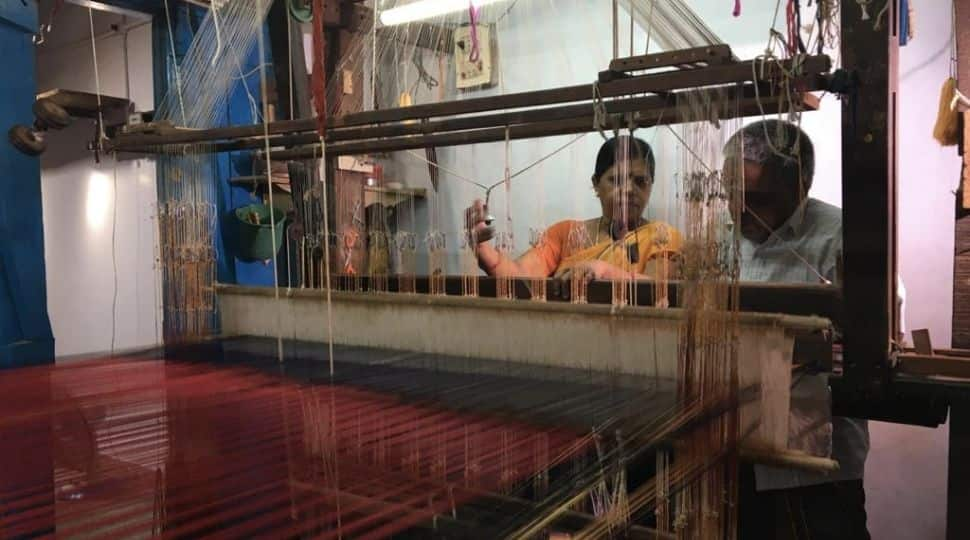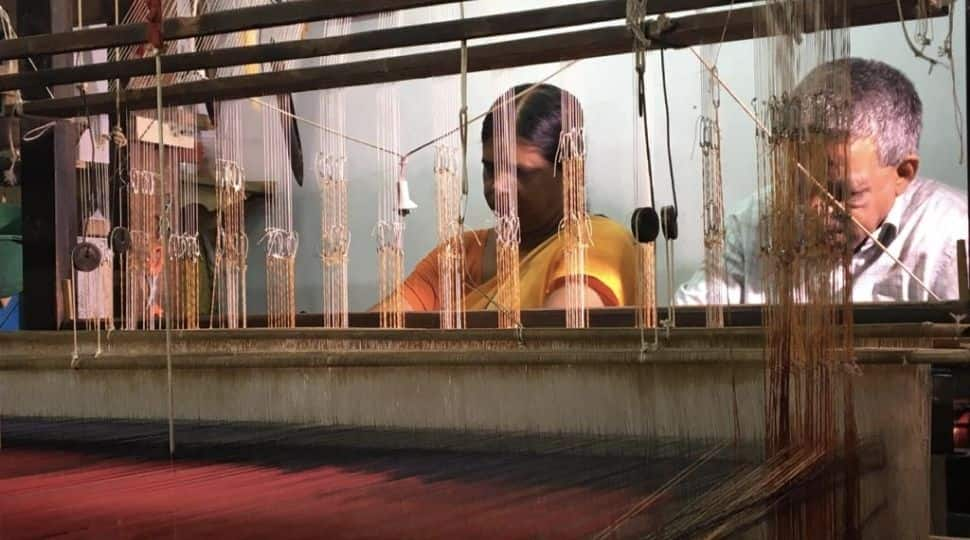Madurai: Saurashtra Handloom weavers hopeful of Govt support after PM Modi mentions them in speech
The community from Saurashtra migrated to Tamil Nadu about 400 years ago and have made the cultural capital of Tamil Nadu their home.
- The community from Saurashtra migrated to Tamil Nadu about 400 years ago and have made the cultural capital of Tamil Nadu their home
- They are completely assimilated into Tamil culture and traditions
- Until the mid-1990s, the State Government used to provide them raw material and buy the finished saris, as a part of a Cooperative system
Trending Photos
)
Madurai: Not too far from the heart of Madurai city, is Krishnapuram Colony, which also goes by the name Weaver’s colony, a reference to the primary vocation of those settled there. The community of handloom weavers hail from Saurashtra, which is the peninsular region of Gujarat, that covers nearly one-third of the western state. The community from Saurashtra migrated to Tamil Nadu about 400 years ago and have made the cultural capital of Tamil Nadu their home.
Having completely assimilated into Tamil culture and traditions, they are nearly indistinguishable from the population here, speaking in Madurai Tamil and dressed like those who’ve belonged here for ages. However, the community’s connection with their mother tongue remains as intact as ever. They say that every time they meet another person from their community and region, they would strike a conversation in their own language.
Of the nearly 300 families that live in the weavers' colony, just about 200 of them have the traditional wooden handloom weaving equipment, which nearly occupies a 150square feet room.

Haridas Vinayaga, a trader who has been closely associated with the handloom industry says that the younger generations have started moving to other professions and settling well in life. “This art form is passed on from one generation to another, but today only the aged people continue it, as they are left with no other option for their livelihood. They are desperate for Government support”
In a stark contrast from nearly 25 years ago, today their artistic work of handloom weaving of cotton saris faces the threat of ceasing to be. Over the last quarter of a century, the emergence of synthetic materials, machine-weaving looms and sales of handloom garments have dented their hopes of a better life and livelihood.
The weavers say that until the mid-1990s, the State Government used to provide them raw material and buy the finished saris, as a part of a Cooperative system. But the Government not only stopped buying from the handloom weavers, but they also started procuring machine-made saris, thus dealing a body blow. Since then, the community of weavers depend on private suppliers who sell them the raw material and later pay a paltry sum of Rs.200-250 for a handloom sari.

A family of four - Ganesh, Rajeshwari, Kannan and Dhanalakshmi are working at the looms set up in their homes. It takes nearly two days worth of effort by all of them to make a single sari that costs around Rs.1000, which is eventually sold in shops for over Rs.2500. The weavers lament that the intermediaries make a large share of the money under the current arrangement. They say that a family of four members must toil to make around Rs.8000 a month.
The major demands of the weaver families are a Geographic indication tag for their products, authentication for genuine handloom saris, weaver’s minimum guarantee among others. They are hopeful that Prime Minister Narendra Modi and will help their community, which belongs to the home state of the Prime Minister himself.
On Friday, while campaigning for the NDA candidates in Madurai, Prime Minister Narendra Modi’s speech was replete with references to leaders and cultural icons from the region. The NDA’s star campaigner had also touched upon this vibrant community from the Saurashtra region, who had made Madurai their home over the last 400 years.







)
)
)
)
)
)
)
)
)
)
